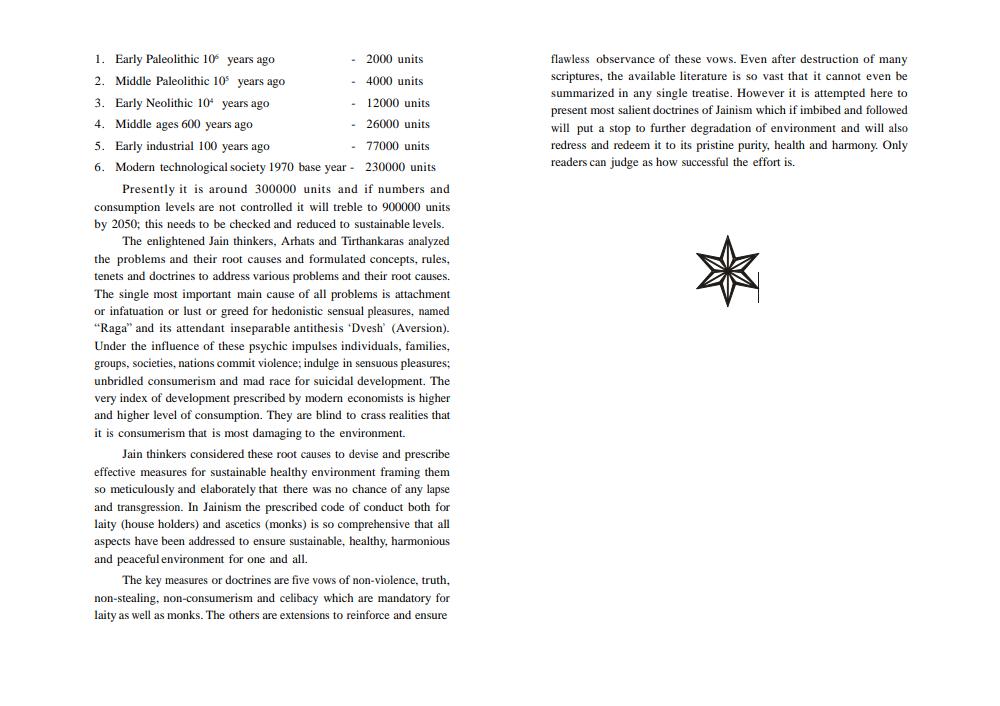________________
flawless observance of these vows. Even after destruction of many scriptures, the available literature is so vast that it cannot even be summarized in any single treatise. However it is attempted here to present most salient doctrines of Jainism which if imbibed and followed will put a stop to further degradation of environment and will also redress and redeem it to its pristine purity, health and harmony. Only readers can judge as how successful the effort is.
1. Early Paleolithic 10 years ago
- 2000 units 2. Middle Paleolithic 105 years ago
• 4000 units 3. Early Neolithic 10 years ago
- 12000 units 4. Middle ages 600 years ago
- 26000 units 5. Early industrial 100 years ago
- 77000 units 6. Modern technological society 1970 base year - 230000 units
Presently it is around 300000 units and if numbers and consumption levels are not controlled it will treble to 900000 units by 2050; this needs to be checked and reduced to sustainable levels.
The enlightened Jain thinkers, Arhats and Tirthankaras analyzed the problems and their root causes and formulated concepts, rules, tenets and doctrines to address various problems and their root causes. The single most important main cause of all problems is attachment or infatuation or lust or greed for hedonistic sensual pleasures, named "Raga" and its attendant inseparable antithesis "Dvesh' (Aversion) Under the influence of these psychic impulses individuals, families, groups, societies, nations commit violence; indulge in sensuous pleasures: unbridled consumerism and mad race for suicidal development. The very index of development prescribed by modern economists is higher and higher level of consumption. They are blind to crass realities that it is consumerism that is most damaging to the environment.
Jain thinkers considered these root causes to devise and prescribe effective measures for sustainable healthy environment framing them so meticulously and elaborately that there was no chance of any lapse and transgression. In Jainism the prescribed code of conduct both for laity (house holders) and ascetics (monks) is so comprehensive that all aspects have been addressed to ensure sustainable, healthy, harmonious and peaceful environment for one and all.
The key measures or doctrines are five vows of non-violence, truth, non-stealing, non-consumerism and celibacy which are mandatory for laity as well as monks. The others are extensions to reinforce and ensure




